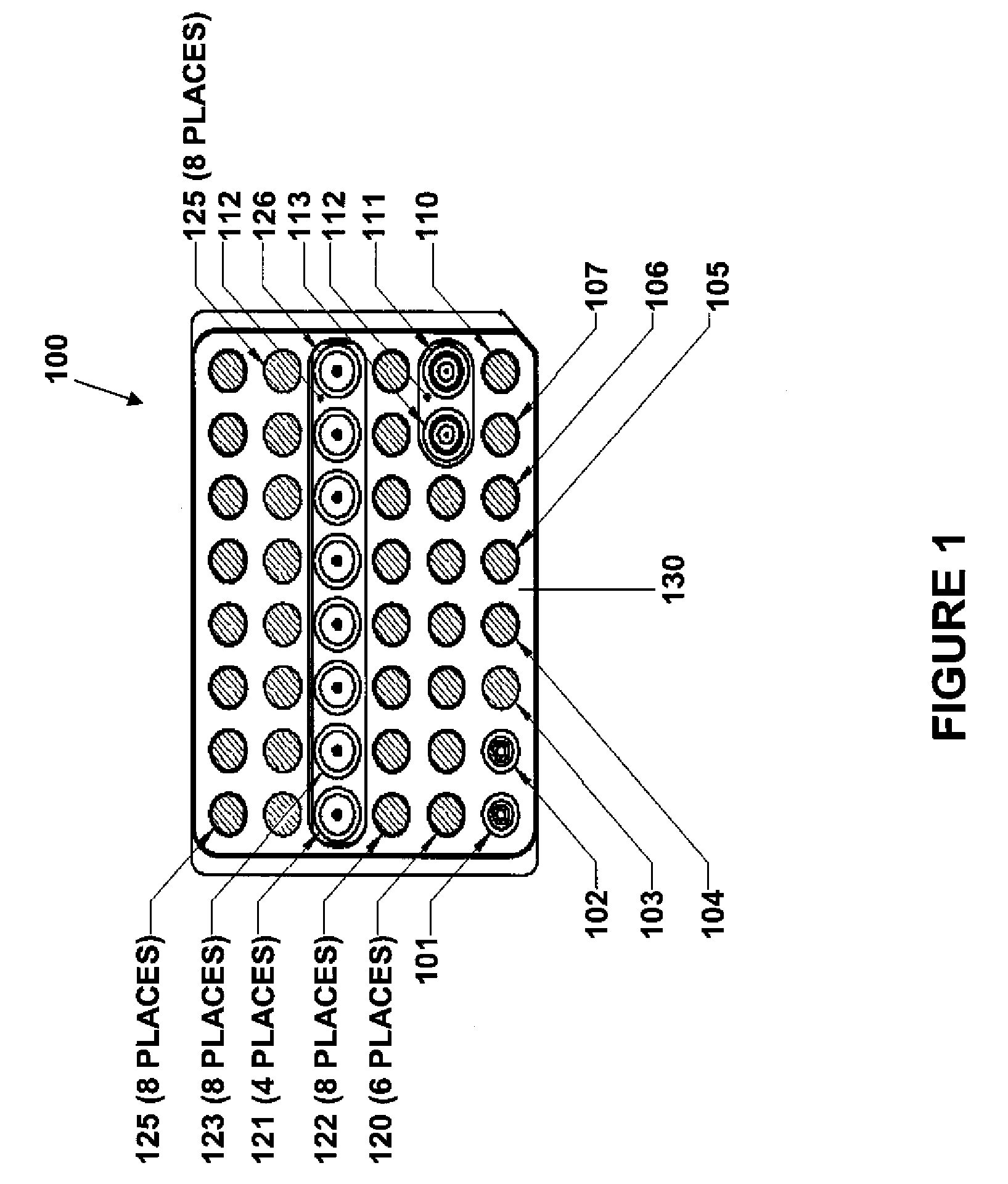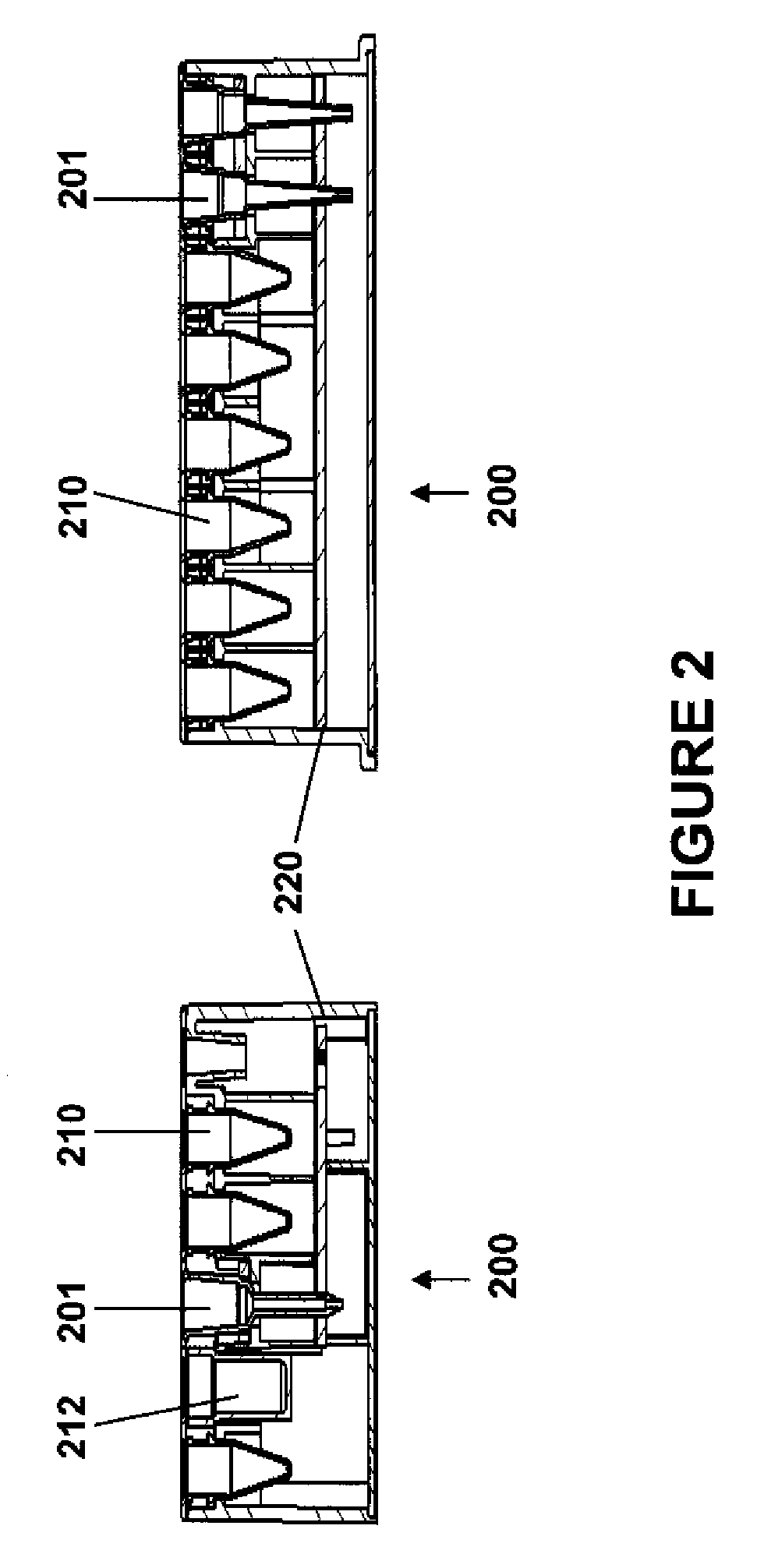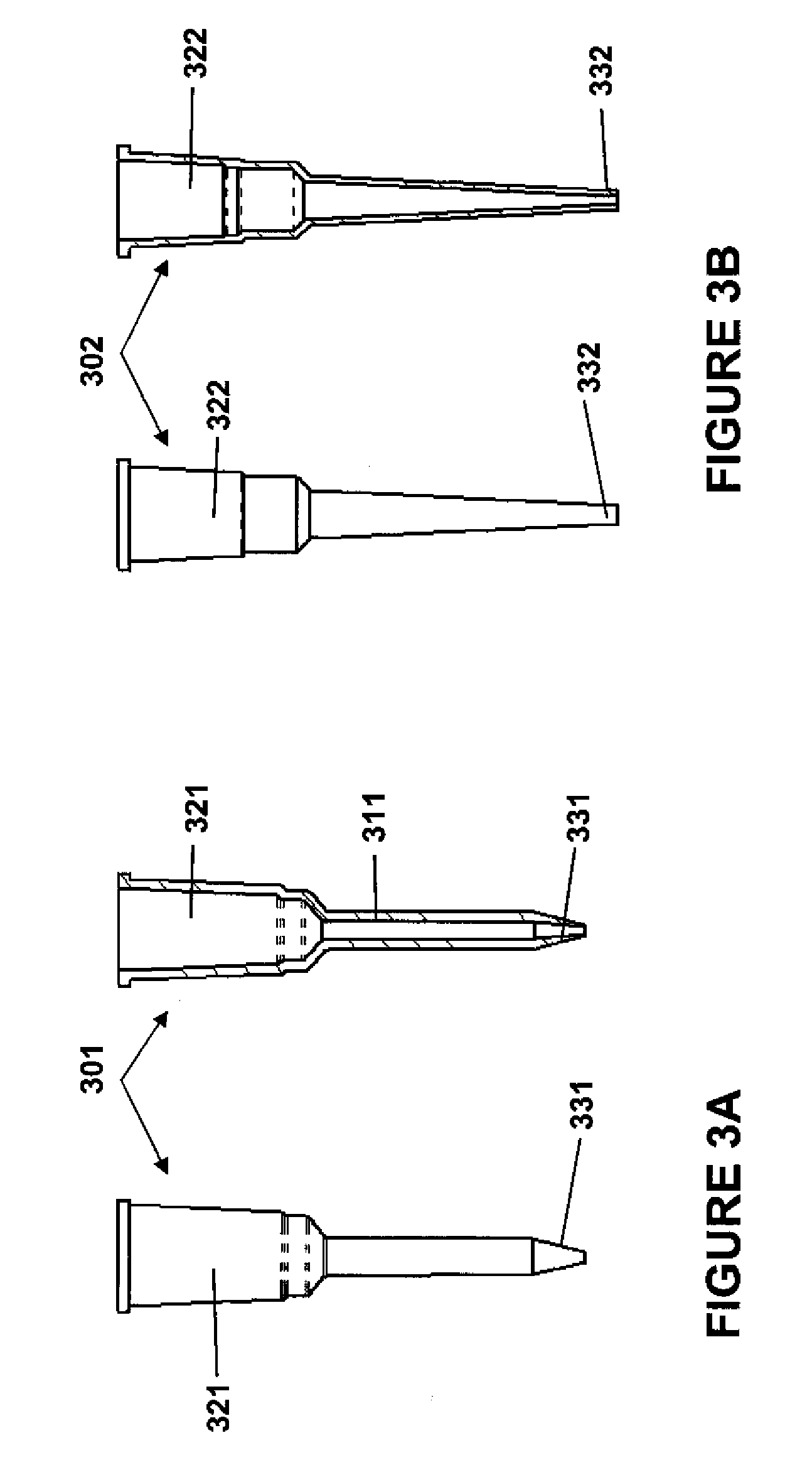Modular point-of-care devices, systems, and uses thereof
a point-of-care device and module technology, applied in the field of modules, can solve the problem of unmet needs for alternative designs of poc devices
- Summary
- Abstract
- Description
- Claims
- Application Information
AI Technical Summary
Benefits of technology
Problems solved by technology
Method used
Image
Examples
example 1
[0287]In this example, a device, method, and system of the invention are used to perform an assay for human VEGFR2. The example demonstrates a type of assay that can be performed at the point of care. The capture surface of an assay unit can be coated onto the assay unit according to the assay, this example a VEGFR2 assay. The inner surface of the assay unit (made from injection molded polystyrene similar to example in FIG. 3A) was exposed to a succession of coating reagents by aspiration and pneumatic ejection. Twenty microliters of each coating reagents were drawn into assay units and incubated at room temperature for 10 minutes. The coating reagents used in this example are, as used in succession, Neutravidin (20 ug / mL) in Carbonate-Bicarbonate buffer (pH 9), biotinylated “capture antibody” (a monoclonal antibody directed to VEGFR2 at 20 ug / mL) in Tris buffered saline, (pH 8), and a “fixative” reagent containing 3% bovine serum albumin in Tris-buffered saline. After the successio...
example 2
[0290]An assay for human P1GF was performed using the assay units and reagent units of the invention and read in a commercial instrument. In parallel an assay using the same reagents was done in prototype disposable cartridges (as described below) in a prototype reader. Analyte concentrations were 0, 4, 80 and 400 pg / mL respectively. The measurements illustrated in FIG. 13 were used to calibrate an assay unit and reagent unit necessary for conducting an assay for human P1GF.
example 3
[0291]Magnetizable beads are 1.3 um diameter BioMag magnetic particles from Bangs Laboratories. Beads are coated (by the manufacturer) with anti-Rabbit IgG. Beads are dispersed at 14 mg / mL in tris-buffered sucrose (or, alternatively, tris buffered saline) containing 3% bovine serum albumin and rabbit anti-human red blood cell IgG, from CedarLane at >=1.15 mg / mL. Aliquots (10 uL of this dispersion were dispensed into conical tubes and lyophilized (frozen in liquid N2 and lyophilized for approximately 24 hrs. at −70 C) prior to insertion into a slot in the cartridge housing. The rabbit antibody binds both to the red cells and to the anti-rabbit IgG-coated beads and forms a co-agglutinate of beads and red cells.
[0292]The lyophilized magnetizable bead pellet was re-suspended by adding 20 uL of whole blood then aspirating and dispensing at least 8 times (approximately 1.5 min) into a conical tube.
[0293]Blood was separated by placing the tip (in a vertical orientation) in a strong, horizo...
PUM
| Property | Measurement | Unit |
|---|---|---|
| volume | aaaaa | aaaaa |
| volume | aaaaa | aaaaa |
| volume | aaaaa | aaaaa |
Abstract
Description
Claims
Application Information
 Login to View More
Login to View More - R&D
- Intellectual Property
- Life Sciences
- Materials
- Tech Scout
- Unparalleled Data Quality
- Higher Quality Content
- 60% Fewer Hallucinations
Browse by: Latest US Patents, China's latest patents, Technical Efficacy Thesaurus, Application Domain, Technology Topic, Popular Technical Reports.
© 2025 PatSnap. All rights reserved.Legal|Privacy policy|Modern Slavery Act Transparency Statement|Sitemap|About US| Contact US: help@patsnap.com



